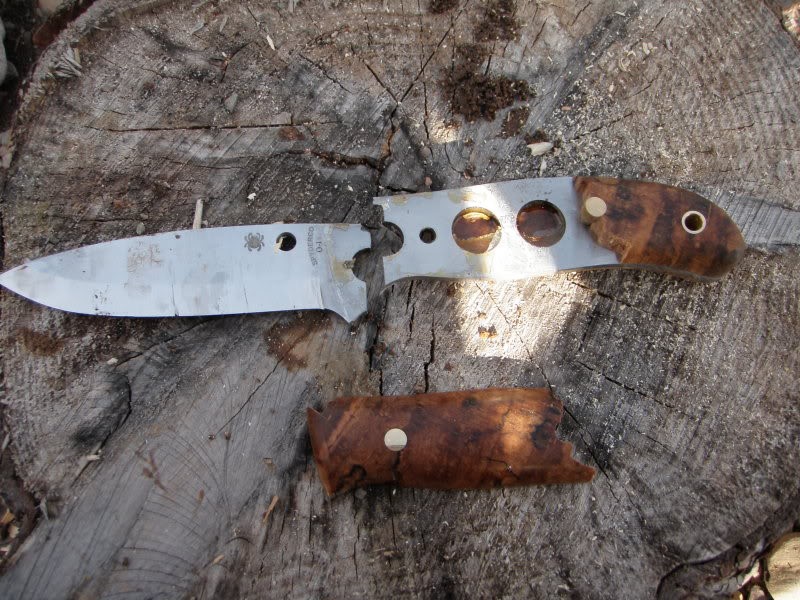I had seen a video of a US company that makes inexpensive kitchen knives this way, but went digging and found the Ruana line of knives and the Murphy combat knife.
Casting aluminum around a blade tang appears to be an extremely solid way to make a knife. Aluminum is strong, light, resists corrosion and has a "warm" feel that makes people like to use it for pistol grips and folder scales. Compared to just about any other material of encasing a blade tang, it is the strongest and most rigid. And aluminum melts between 865 and 1240F, so it isn't going to structurally damage the blade steel alloy. Aluminum is easy to machine and polish. And being low density, it preserves a decent balance to the finished knife.
Due to the good bond with the steel and high rigidity of the aluminum, I would expect a hidden tang knife with cast-on handles to be stronger than a full tang knife with any handle material bonded to it. If the tang isn't allowed to flex, it can't be broken unless the aluminum breaks first (which ain't easy).
For a hard use it would appear that a cast-on aluminum handle over a properly designed tang would offer tremendous strength and utility. What do you think?
http://www.ruanaknives.com/how.aspx

Casting aluminum around a blade tang appears to be an extremely solid way to make a knife. Aluminum is strong, light, resists corrosion and has a "warm" feel that makes people like to use it for pistol grips and folder scales. Compared to just about any other material of encasing a blade tang, it is the strongest and most rigid. And aluminum melts between 865 and 1240F, so it isn't going to structurally damage the blade steel alloy. Aluminum is easy to machine and polish. And being low density, it preserves a decent balance to the finished knife.
Due to the good bond with the steel and high rigidity of the aluminum, I would expect a hidden tang knife with cast-on handles to be stronger than a full tang knife with any handle material bonded to it. If the tang isn't allowed to flex, it can't be broken unless the aluminum breaks first (which ain't easy).
For a hard use it would appear that a cast-on aluminum handle over a properly designed tang would offer tremendous strength and utility. What do you think?
http://www.ruanaknives.com/how.aspx








